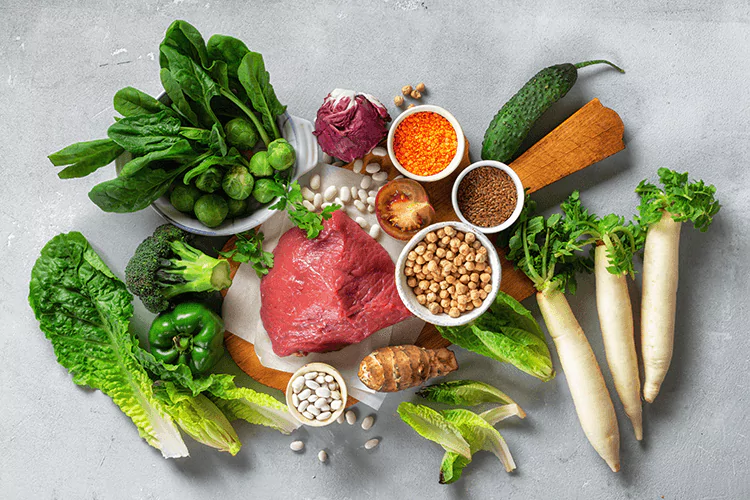How Korean Nutrition Supports Healing and Enhances Postoperative Wellness
Medical tourism in Korea continues to flourish, with thousands traveling to the country for advanced surgeries ranging from cosmetic procedures to complex medical treatments. While expert surgical care is critical, equally important is the postoperative recovery process — where nutrition plays a vital role.
The K-Style Diet, rooted in traditional Korean foods and balanced nutrition, offers medical tourists an effective and culturally authentic way to support healing, reduce inflammation, and boost overall wellness after surgery. This guide will walk you through why and how to combine your recovery with the K-Style Diet for optimal results.
Why Nutrition Matters After Surgery
Post-surgical recovery places increased demands on your body:
- Tissue repair and wound healing require adequate protein, vitamins, and minerals.
- Immune function needs to be supported to prevent infections.
- Managing inflammation helps reduce pain and swelling.
- Maintaining energy levels is key for physical rehabilitation.
A well-designed diet can accelerate these processes and reduce complications.
Key Benefits of the K-Style Diet During Recovery
1. Rich in Anti-Inflammatory Ingredients
Many Korean dishes include garlic, ginger, green onions, and fermented foods packed with antioxidants and anti-inflammatory compounds that help reduce postoperative inflammation.
2. High in Protein and Nutrients
Foods like tofu, fish, lean poultry, eggs, and soybean products provide essential amino acids for tissue repair. Seaweed and vegetables contribute vitamins A, C, E, and minerals like zinc and iron crucial for healing.
3. Probiotics for Gut Health
Fermented staples such as kimchi, doenjang (fermented soybean paste), and fermented radish support gut microbiota, enhancing digestion and immune defenses—especially important if antibiotics were used.
4. Gentle and Digestible
Korean soups (jjigae), stews, and porridges (juk) offer easily digestible nourishment suitable for sensitive post-surgery stomachs.
5. Hydrating and Detoxifying
Herbal teas like barley tea (bori-cha) and rice water help maintain hydration and aid toxin elimination.
Practical Tips for Medical Tourists Combining Surgery and K-Style Diet
Consult Your Medical and Nutrition Teams
- Discuss your surgery type and recovery timeline with your Korean dietitian.
- Your diet plan may need adjustments based on your specific condition, medication, or physical activity restrictions.
Start with Soft and Mild Foods
- Initially, consume mild, warm soups and porridges.
- Avoid spicy, salty, or heavy fried foods during the early recovery phase.
Incorporate Fermented Foods Gradually
- Introduce kimchi and other fermented items slowly to prevent digestive upset.
- Choose low-sodium varieties if you have blood pressure concerns.
Prioritize Hydration
- Drink plenty of fluids, including Korean herbal teas recommended by your nutritionist.
Monitor Portion Sizes and Meal Frequency
- Eat smaller, frequent meals to maintain energy without overloading digestion.
Sample K-Style Diet Foods Ideal for Surgery Recovery
- Miyeok-guk (Seaweed Soup): Traditionally eaten by postpartum women, it’s rich in calcium and iodine that support recovery and skin health.
- Dakjuk (Chicken Porridge): Easy to digest, high in protein, and soothing for the stomach.
- Tofu Jjigae (Tofu Stew): Provides protein with gentle spices.
- Steamed Fish or Grilled Mackerel: Omega-3 fatty acids help reduce inflammation.
- Vegetable Banchan: Side dishes of steamed or pickled vegetables provide vitamins and minerals.
- Barley Tea: Hydrating and good for digestion.
Recovery Timeline and Diet Integration
- Days 1-3 (Immediate Post-Op): Focus on hydration, clear broths, and soft porridges.
- Days 4-7: Gradually add soft proteins like tofu, steamed fish, and mild soups.
- Weeks 2-4: Introduce more fermented foods, vegetables, and balanced meals as tolerated.
- After 1 Month: Transition to a well-rounded K-Style Diet for long-term health benefits.
Combining Diet with Other Korean Wellness Practices
Many medical tourists complement the K-Style Diet with:
- Acupuncture: To reduce pain and improve circulation.
- Herbal medicine: Personalized formulations for healing and detoxification.
- Skin care regimens: To support skin repair after cosmetic procedures.
- Physical therapy and gentle exercise: To regain strength and mobility.
Real Patient Experiences
- Anna, 38, Australia: “Eating traditional Korean soups and kimchi helped me recover quickly after my facial surgery. The dietitian’s guidance was invaluable.”
- Jin, 45, USA: “The gradual introduction of fermented foods improved my digestion post-appendectomy.”
- Lina, 32, Canada: “Combining Korean nutrition coaching with acupuncture made my recovery smoother and less painful.”
Final Thoughts
For medical tourists undergoing surgery in Korea, the K-Style Diet is a powerful ally in the recovery process. Its nutrient-dense, anti-inflammatory, and gut-friendly foods provide essential support for healing, energy, and immune health.
Partnering with a knowledgeable Korean dietitian and integrating traditional dietary wisdom with modern medical care can enhance your surgical outcomes and set the foundation for lasting wellness.




